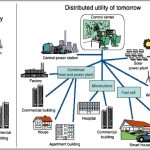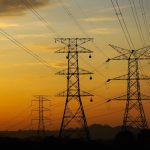Economic aspects of power generation
The function of a power station is to deliver power at the lowest possible cost per kilo watt hour. This total cost is made up of fixed charges consisting of interest on the capital, taxes, insurance, depreciation and salary of managerial staff, the operating expenses such as cost of fuels, water, oil, labor, repairs and maintenance etc.
1. The cost of power generation can be minimized by:
2. Choosing equipment that is available for operation during the largest possible % of time in a year.
3. Reducing the amount of investment in the plant.
4. Operation through fewer men.
5. Having uniform design
6. Selecting the station as to reduce cost of fuel, labor, etc.
All the electrical energy generated in a power station must be consumed immediately as it cannotbe stored. So the electrical energy generated in a power station must be regulated according tothe demand. The demand of electrical energy or load will also vary with the time and a powerstation must be capable of meeting the maximum load at any time.
Load curve:
Load curve is plot of load in kilowatts versus time usually for a day or a year.
Definition:
The curve showing the variation of load on the power station with respect to time.

Types of load curves:
1. Daily load curve–Load variations during the whole day
2. Monthly load curve–Load curve obtained from the daily load curve
3. Yearly load curve-Load curve obtained from the monthly load curve
Load Characteristics:
· Connected load Maximum demand
· Average load
· Load factor
· Diversity factor
· Plant capacity factor
· Plant use factor
Load duration curve
Load duration curve is the plot of load in kilowatts versus time duration for which it occurs. When the elements of a load curve are arranged in the order of descending magnitudes.

Number and Size of Units:
Maximum demand:
Maximum demand is the greatest of all demands which have occurred during a given period of time.
Average load:
Average load is the average load on the power station in a given period (day/month or year)
Base load:
Base load is the minimum load over a given period of time.
Connected load:
Connected load of a system is the sum of the continuous ratings of the load consuming apparatus connected to the system.
Peak load:
Peak load is the maximum load consumed or produced by a unit or group of units in a stated period of time. It may be the maximum instantaneous load or the maximum average load over a designated interval of time.
Demand factor:
Demand factor is the ratio of maximum demand to the connected load of a consumer.
Diversity factor:
Diversity factor is the ratio of sum of individual maximum demands to the combined maximum demand on power stations
Load factor:
Load factor is the ratio of average load during a specified period to the maximum load occurring during the period. Load factor = Average Load / Maximum demand
Station load factor:
Station load factor is the ratio of net power generated to the net maximum demand on a power station.
Plant factor:
Plant factor is the ratio of the average load on the plant for the period of time considered, to the aggregate rating of the generating equipment installed in the plant.
Capacity factor:
Capacity factor is the ratio of the average load on the machine for a period of time considered, to the rating of the machine.
Demand factor:
Demand factor is the ratio of maximum demand of system or part of system, to the total connected load of the system, or part of system, under consideration.


